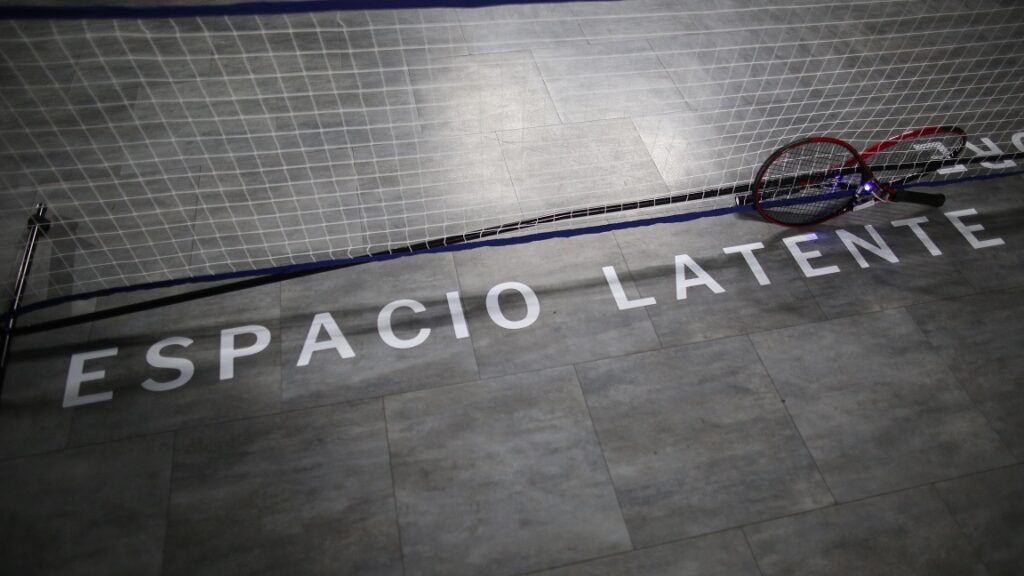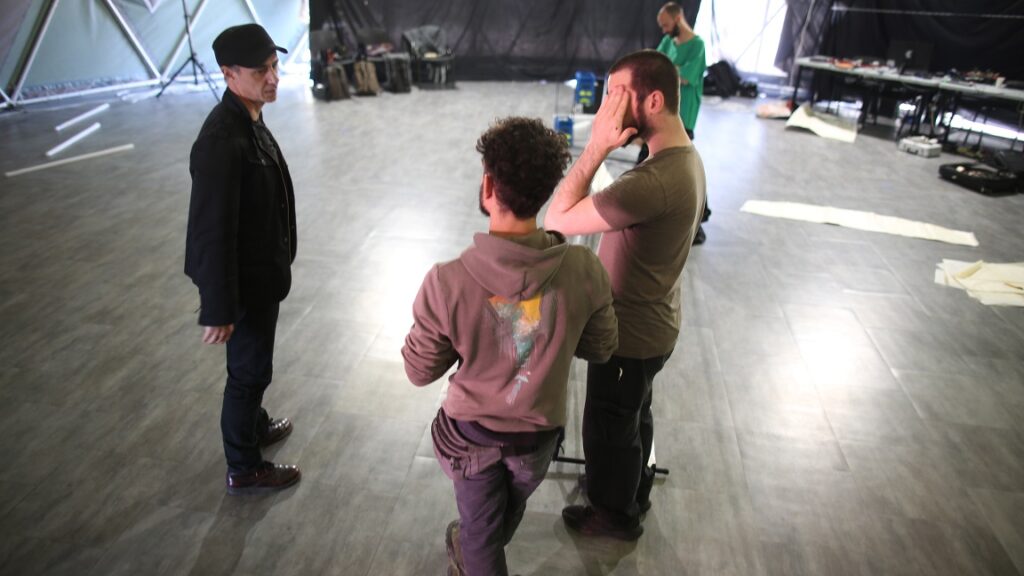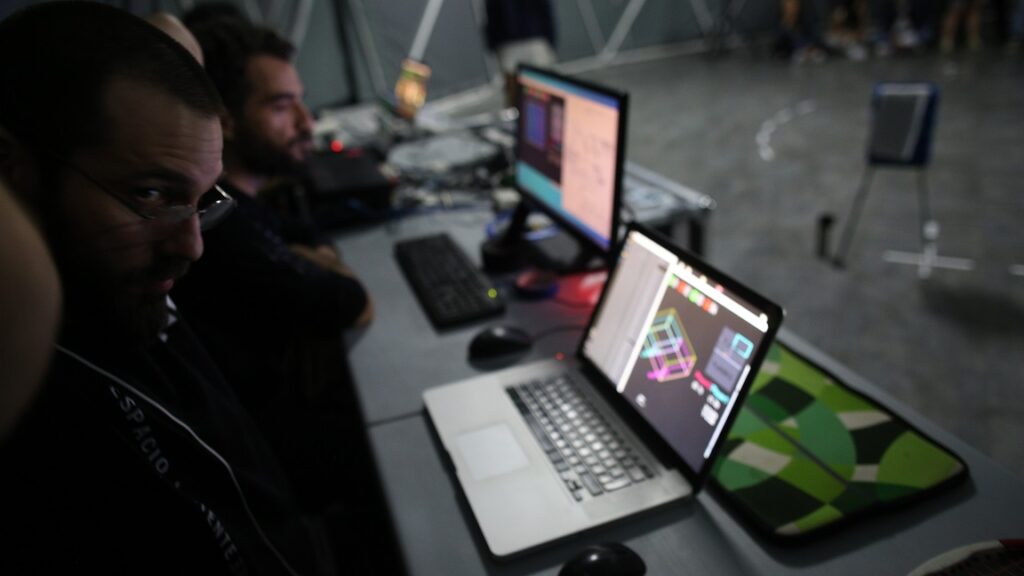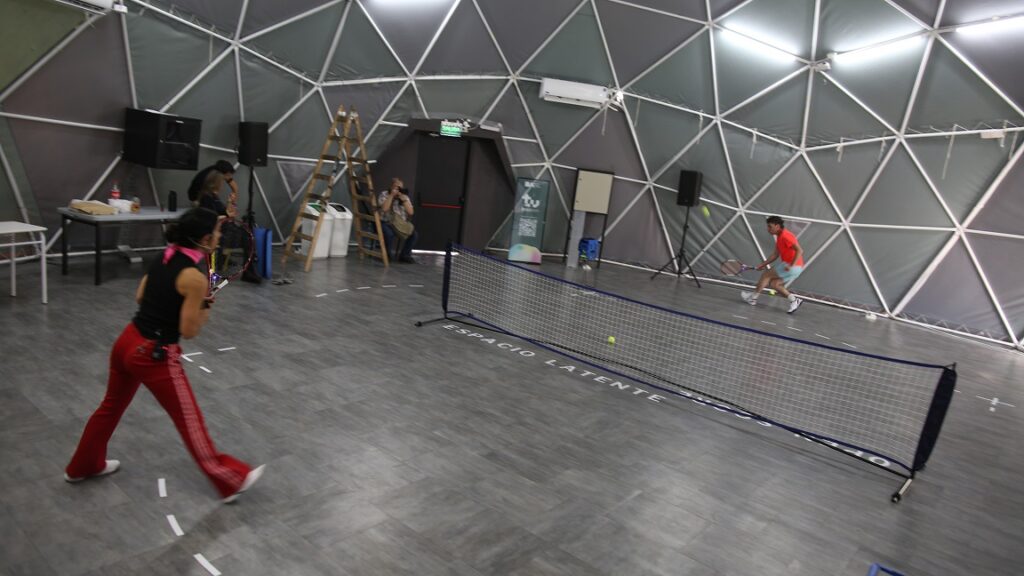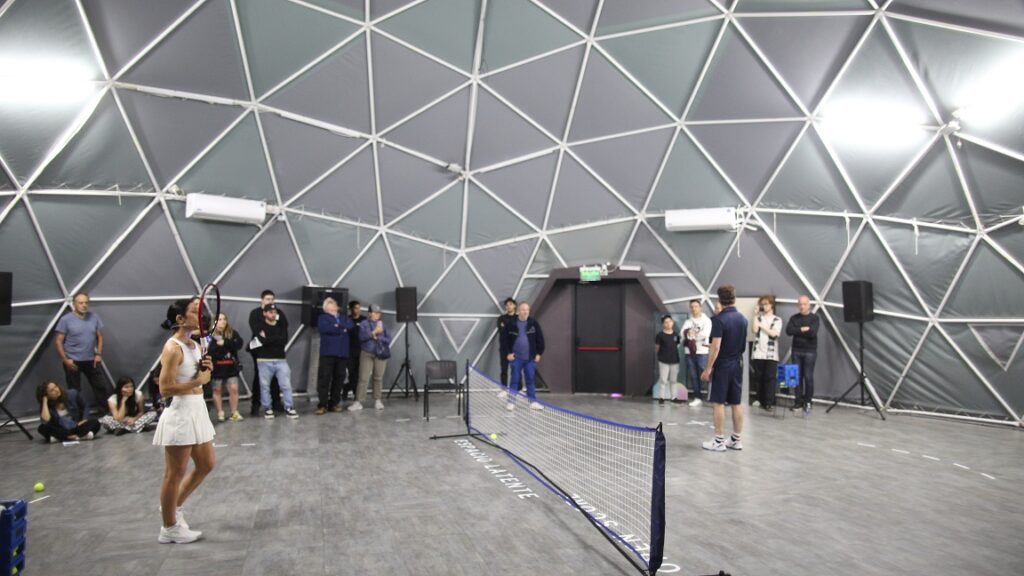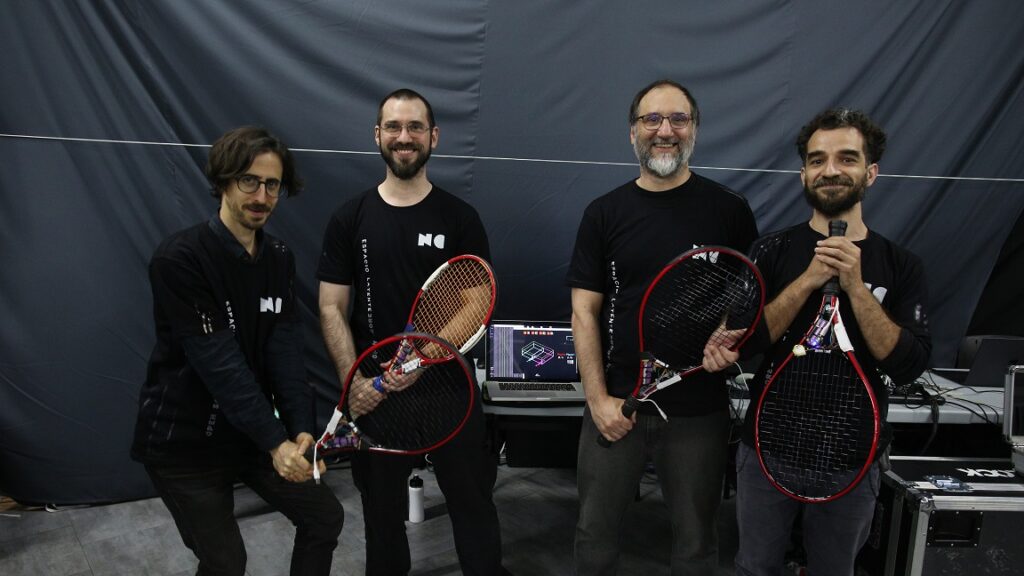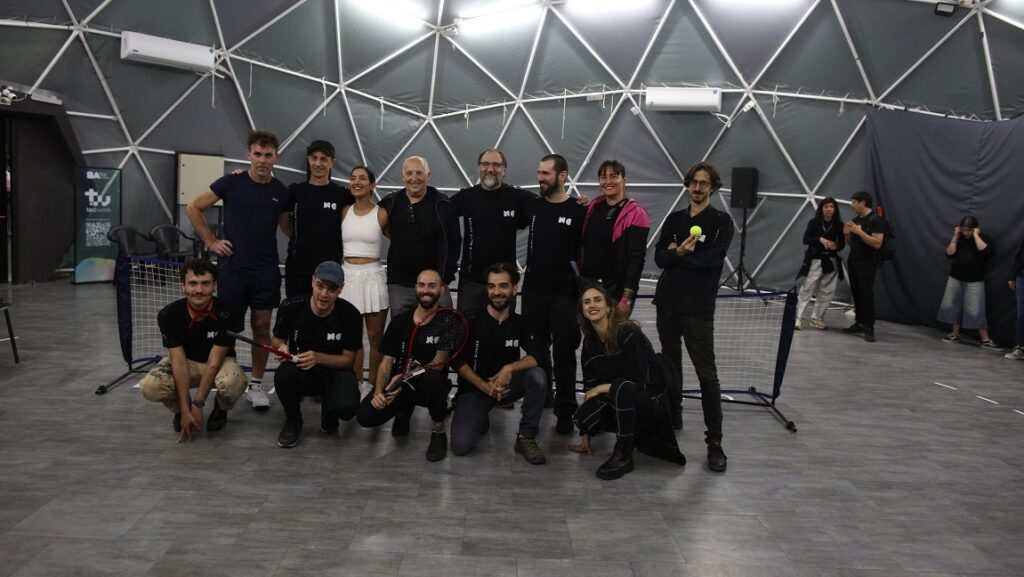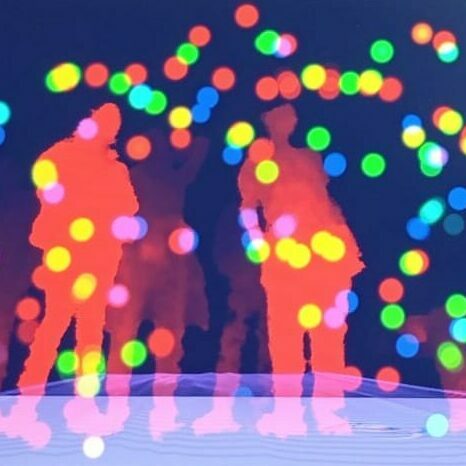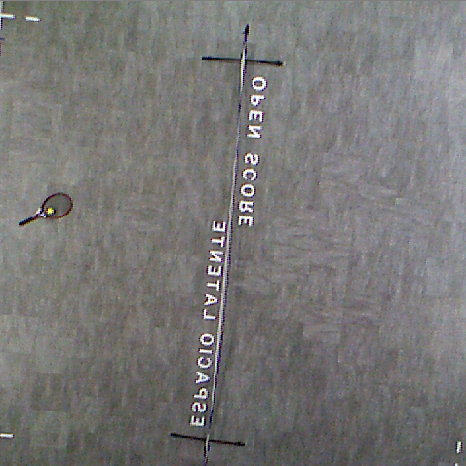OpenScore at No Convencional Festival
THE SOUND OF IMPACT
At the crossroads of motion, sound, and code, a tennis match became something more.
Built from custom electronics, real-time tracking, and artistic improvisation, this was performance through data.
Developed by CONICET researchers from LIAA and ICC in close collaboration with the artist Sebastián Verea, OpenScore premiered at the No Convencional Festival as a shared experiment in expressive technology.
Expressive instruments out of natural motion
At the heart of the system was a custom instrument: a modified tennis racket fitted with an ESP32 microcontroller, an inertial sensor, and piezoelectric mics. These components worked together to detect acceleration, orientation, and impact events, which were transmitted in real time using OSC over Wi-Fi.
The technical challenge was to preserve the usability and physical balance of the racket while ensuring reliable data transmission during active play.
Every hit and movement became a sound event in Ableton Live — the player’s gestures directly shaped the sonic atmosphere, turning a familiar object into a tool for expression.
Tracking the Game
To expand interaction beyond the racket, we integrated a Kinect sensor positioned above the court to track the players’ positions on the X and Y axes.
This spatial data became another layer of input, mapping motion across the court into musical variation.
As players moved, paused, or shifted, their locations influenced the composition, blending sport with live spatialized audio — allowing the court itself to speak through sound.
Designing Interaction as Dialogue
OpenScore was the result of close interdisciplinary collaboration. Each component — from sensing and tracking to audio processing — was shaped in dialogue with the artist’s vision and the practical demands of live performance.
Rehearsals played a crucial role in aligning timing, gesture, and intention, refining not only the technical performance but the expressive potential of the system.
Rather than a fixed installation, OpenScore emerged as a framework for real-time interaction — one that could evolve with its participants, adapting to new contexts and interpretations.
